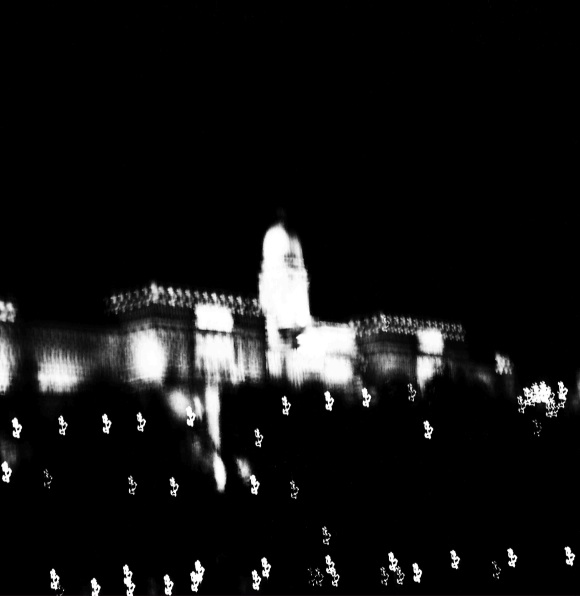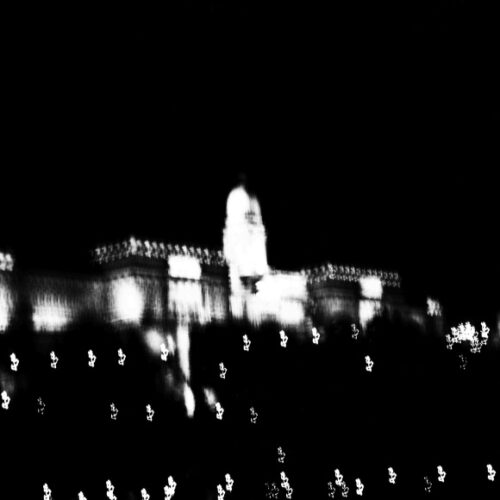It’s a very British trend to enshrine popular figures as "national treasures", and one that has been overused in recent years. The question must be asked: if Cheryl Cole is a "national treasure", then what title should we give to Richard Youngs? After all, the maverick Scotsman has released over twenty albums since 1990, and I have yet to encounter one that wasn’t worth hearing and loving. He’s played with Jandek, Alex Neilsen and Matt Bower, and remains THE iconic figure of the modern UK underground. A treasure, by any definition of the term, although perhaps that line from Aladdin is most apt: "A diamond in the rough". Richard Youngs evolves in the shadows where most won’t look, but those who do will forever be dazzled and amazed.
Yet even for an outsider such as Youngs, the risk of complacency potentially remains strong. This is something he has fought against by constantly shifting genres and styles to prodigious effect. Where 1990’s Advent was a mass of seething drones and dreamy vocal invectives, Sapphie, released eight years later, was a folk masterpiece in the singer-songwriter style, albeit one cheekily, and emotionally, inspired by the death of his dog. Since then, he’s toyed with noise on Festival (1992), played with electro-pop archetypes on 2010’s Beyond the Valley of Ultrahits, and reinvented folk-pop as a looped-vocal vehicle on Autumn Response (2009) and Amplifying Host (2011). Despite all this, Amaranthine stands as his most exploratory album in years.
Amaranthine sees a shift in Youngs’ focus as the four tracks that make up the album are based not on guitar (his favoured instrument), but drums. It’s an instrument I didn’t until now know he had mastered (how foolish of me, given he’s already proved he is adept with the oboe, bass, clarinet, piano, guitar and synth). Of course, no Richard Youngs album would be so straightforward as to only focus on one instrument. Even Sapphie, his sparsest and most ‘traditional’ record, was enhanced by the intricate interplay between his Neil Young-esque acoustic guitar and the unhinged nature of his whining, vulnerable vocal. As such, on Amaranthine, he balances the militaristic march of his drumming with looped vocals, sudden tidal waves of guitar feedback and breathless, gasping solos on the shakuhachi, a Japanese flute. As ever, nothing is simple with Richard Youngs.
‘Amaranthine’ evokes a colour: a deep, sensual red that, as such, contrasts with the monochromatic artwork that adorns this LP. But ‘amaranthine’ is also a term for ‘immortal’, after the mystical amaranth flower, and you can’t help but think that Youngs’ constant reinvention is an attempt to hold back the creative "rust" that near-namesake Neil Young sang about back in 1979. As such, it is perhaps little surprise that Amaranthine, is Youngs’ most boundary-pushing album yet, teetering on the edges between rock, noise and free improv.
As often with his work, it’s the voice that hits you first, despite the fact that ‘Hopeless Warriors’ erupts out of the speakers in a clatter of disjointed percussion: where the vocals on Amplifying Host, were looped but clear, here they’re a muffled groan, surrendering the aural space to the untidy rhythmic patterns. Despite this, in the tradition of the great singers of popular music, Youngs’ plaintive yawp is instantly familiar, not quite comforting (especially as a fitful guitar solo pierces through the mix after a couple of minutes), but, as with the amaranth flower, eternal. It’s a voice that caressed on Sapphie and lamented on Autumn Response, moaned on Advent and serenaded on Beyond the Valley of Ultrahits. It’s a voice that anchors you in his universe, whatever form he decides to give it.
On ‘State I’m In (California)’, Youngs returns to his familiar technique of overlaying his vocals on top of one another, as he repeats the lines "How can I know / the state I’m in? / California / Don’t come easily", each verse intruding on and contradicting the one that precedes it. The lyrics are typically cryptic: is it California that doesn’t come easily? Or the state he’s in? Is he asking how he can know the state he’s in, or the venerable state of California? It’s hard to say, and as drums and cymbals crash fitfully behind his multi-tracked moan, the effect of the words is increasingly unsettling. Immortal, eternal: the words return, this time evoking a sort of Burroughs-ian state of permanent disconnected inertia. The track evolves slowly, edging forwards before turning back on itself, the soundscape filled with Youngs’ delirious voice, either repeating those haunting lines or intoning wordlessly. ‘State I’m In (California)’ is easily one of the Scotsman’s greatest-ever tracks.
‘Everybody Needs a Sword’, meanwhile, whisks our narrator across the Atlantic, though he is no less coherent as he gibbers "In London I cannot see / Everybody needs a sword" over and over again, his voice close to breaking point. In the end he gives up, releasing the cosmic mess of the backing track, all muted percussion and icy electronic drones, into a ridiculously brilliant atonal shakuhachi solo. It’s been a while since Richard Youngs has been this outlandishly avant-garde: the final track ‘The Power Come Out’ starts off as minimally percussive as something AMM would have done in the 60s, apart from his reverbed vocal, but quickly he introduces his guitar, an edgy plucked motif, whilst all the while moaning like a ghostly Buddhist monk, the chorus effect on his voice only adding to the sense of unease and phantasmagoria. As the muted tympani beats pick up, he unleashes a demented burst of feedback, halfway between Hendrix and Alan Licht, before quickly re-centralising the song on his echoing vocal. No release, just eternal struggle towards the new.
As ever, it’s hard to put a pin on what Youngs is really trying to express on this album. It would be too easy to say it’s his "drum" album, because the sonic palette is so varied, and his singing remains the true focal point, so the presence of more drums than "usual" (can such a word ever be used with an artist as idiosyncratic as Richard Youngs?) is a bit of a red herring. Instead, the title’s reference to an eternal flower harks back to the man himself: always prolific, always pushing at the envelope of creativity, Richard Youngs is striving for something immortal. As ever, witnessing the journey, as we do on Amaranthine, is the true delight.



